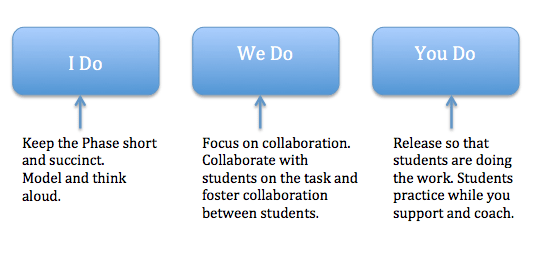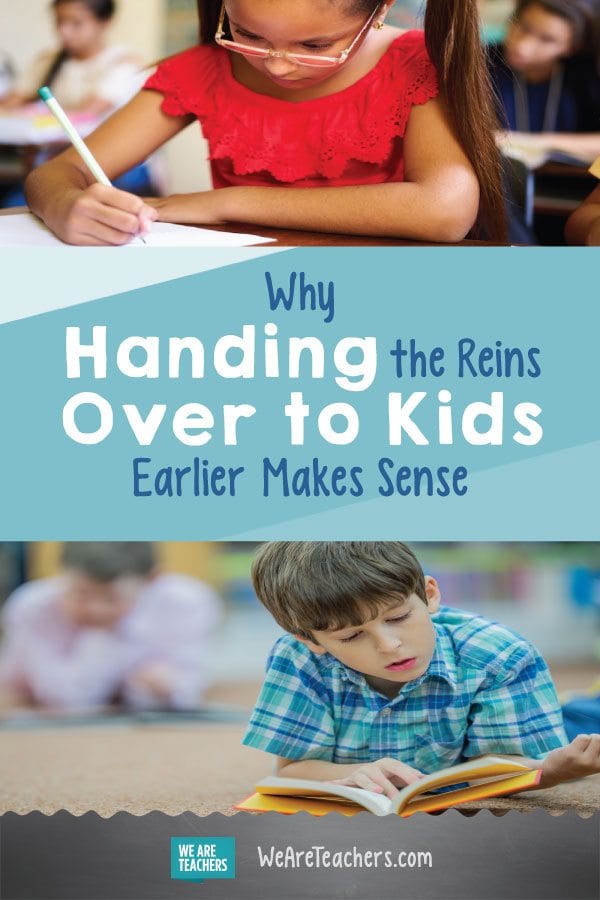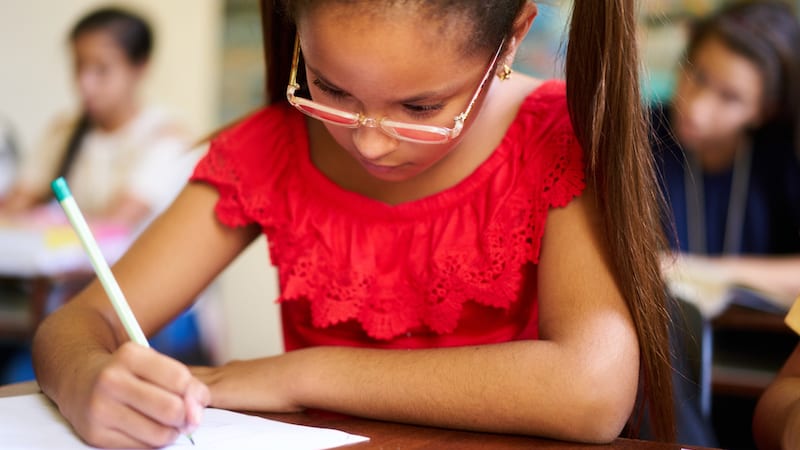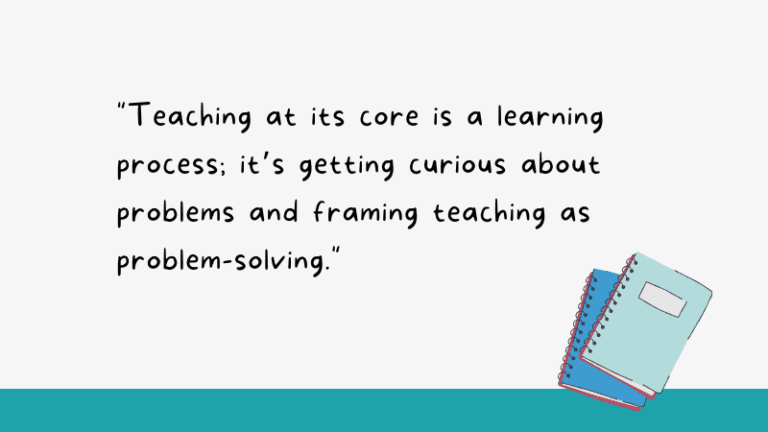Learning happens when students, not you, are doing the work. This seems to be such a simple idea, but in practice it is much harder than it sounds. Sometimes we get bogged down in curriculum or program expectations. In order to teach everything in the curriculum, we move to coverage mode. Coverage mode is what we do when we “cover” the curriculum, teaching at break-neck speed, leaving the learners behind.
Coverage mode doesn’t work.
As we nurture competent readers, writers, and thinkers, we need to slow down the pace of learning. This means we need to take the time for students to “do the doing.” Our role is to provide coaching as students work through meaningful cognitive tasks and to encourage reflective feedback.
Slowing down a bit might mean we don’t “cover” everything we intended. But if we are doing all the work and the students are mostly watching, they aren’t really learning in the first place.
It’s time to rethink I Do, We Do, You Do.

Social cognitive theory supports the notion that students can learn from watching someone else perform a task. However, the theory also supports the idea that students learn more when they are directly involved in the activity and the task is just challenging enough to sustain their interest and desire to work.
You might be familiar with the gradual release of responsibility model known as I Do, We Do, You Do. If we apply social cognitive theory to this model, we can focus with intent on modeling during the I Do phase. Next, we engage students with different types of collaboration during the We Do phase. Finally, we coach students during the You Do phase.
Sometimes we get stuck in the I Do phase, and students end up watching us, copying what we are writing, and not trying it on their own.
I Do means modeling and thinking aloud.
The I Do phase of the gradual release model is best implemented when we model the activity or task. We must think aloud while modeling to make our thinking transparent. It can be easy to get caught up in the doing, where you just work through the strategy quickly and forget to slow down. Instead, we need to pause to talk students through what we did and why. Modeling is the purpose of the I Do phase.
We Do means collaboration.
The We Do phase is about collaboration. Again, it can be easy to get caught up in doing the work, then stopping and having students copy what you did. This is just a glorified way to control student work and thinking, and it is not what is intended in the We Do phase.
Collaboration means that all people involved in the task are making meaningful contributions to the work. If students are copying what you do during the We Do phase, it is not collaborative or motivating for students. Another type of collaboration is students working together themselves. You can provide support and help students discover ideas and answers for themselves, while providing hints and nudges as necessary.
You Do means practice.
The You Do phase is about practice. Learners need you to provide feedback immediately if they are developing misconceptions. Or you may need to give suggestions if they are becoming overly frustrated on their own. Of course, they can work in partners or teams during the You Do phase, with you there to support the group work as needed. To foster maximum engagement during this phase, provide as much student voice and choice as possible.
How do we put earlier release of responsibility into practice?
We need to help ourselves to ensure our students are doing the doing as much as possible during a lesson. Reflection is a powerful strategy. Before, during, and after teaching, reflect on how you planned for students to be responsible for, and engaged in, the work. When you are planning your lesson, ensure students have choice in the activity or task, opportunities to think, read, and write on their own and with peers. During teaching, time yourself so you can honor the wait time you embedded for students to be working on their own or in groups. After teaching, reflect. Ask yourself:
- Did I model?
- Did I release?
- How often was I talking, reading, or writing compared to the amount of time students were talking, reading, or writing?
- Did I coach learners when I let them engage with the work themselves?
Remember, tasks are powerful engagements.
The word task can be a negative, but think about it without the connotation of drudgery or hard work. Tasks are what students are doing in our classrooms. The more engaging the task, the more students will learn.
Great tasks are not teacher directed and are not focused on teacher-pleasing mindsets. Great tasks are activities where students have the greatest degree of ownership and choice as possible. We are the facilitators of the work or tasks, and when students are involved in that, they engage at maximum levels.
When we coach students to do the work themselves, we have truly become learning facilitators focused on the end target: learners who read well, think deeply, and write proficiently.
I teach because I want the students in my classroom to have maximum engagement in their work.
When I promote sooner release of responsibility, I know students are working with purpose. They are learners who:
- immerse themselves in meaningful reading for sustained periods of time and bring meaning to the words that they are reading.
- are thinkers, taking what they are reading and forming new ideas that help the world become a better place.
- can write about their reading and thinking with clarity and purpose.
- are communicating with themselves and others in order to be productive members of the classroom and beyond.
How do you handle release of responsibility in your classroom? For more tips on student engagement and ownership, be sure to check out Nancy Akhavan’s latest book, The Big Book of Literacy Tasks.
Plus, watch our Facebook Live interview with Nancy right here:
https://www.facebook.com/WeAreTeachers/videos/10156475332158708/



